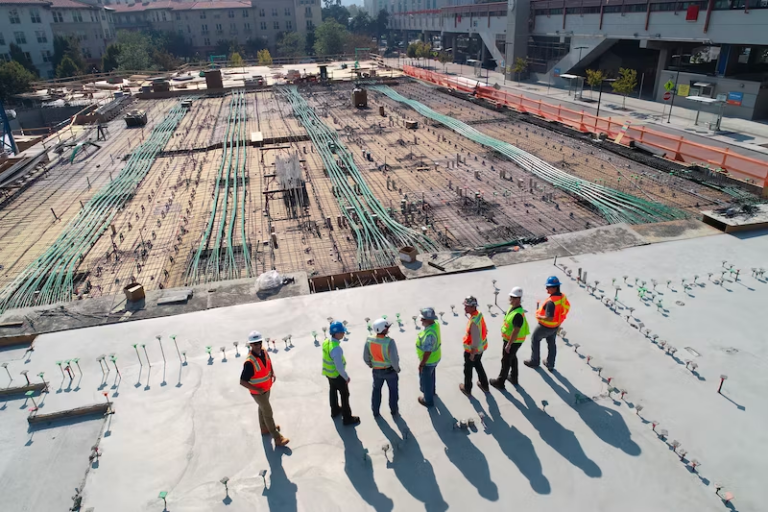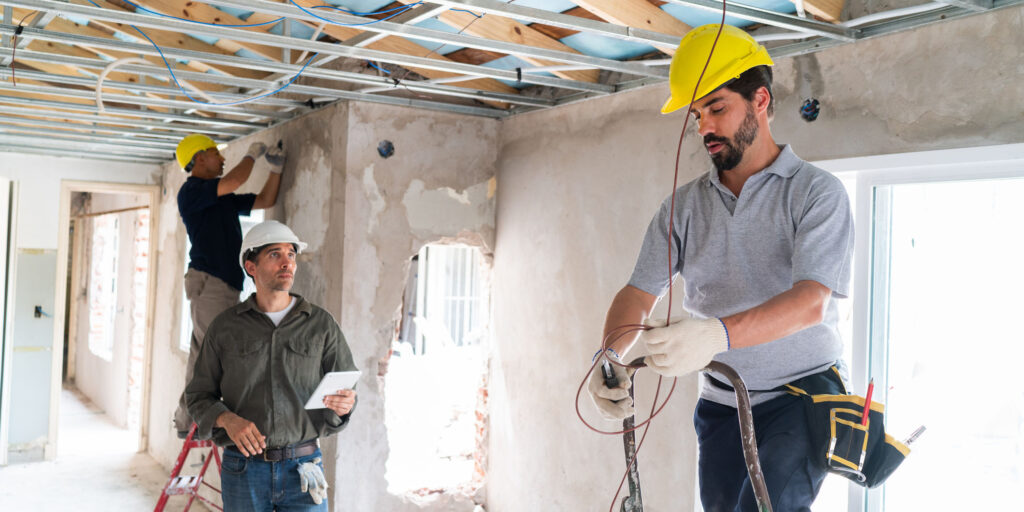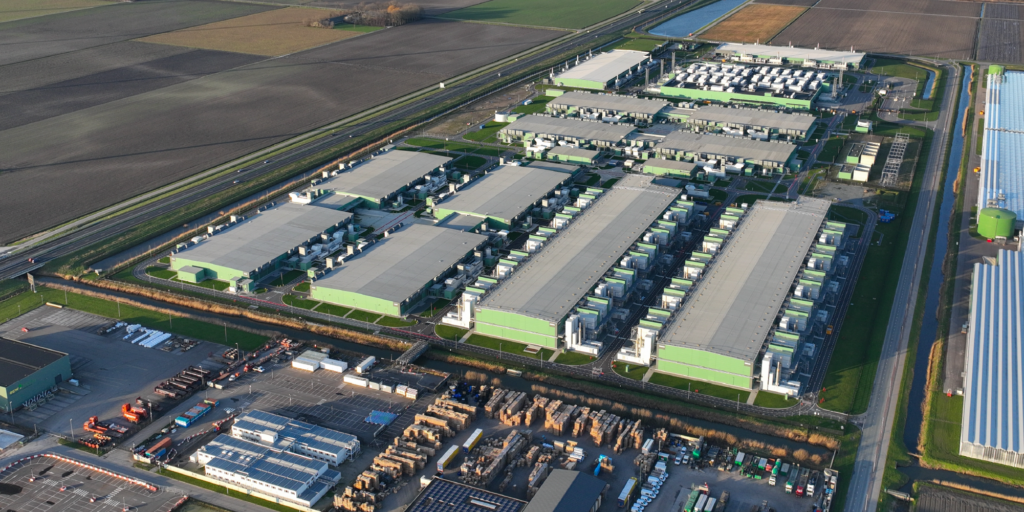— 8 min read
Quality Assurance: Improving Safety and Efficiency in Construction
Last Updated Feb 19, 2025
Last Updated Feb 19, 2025

Quality assurance (which differs from quality control) works to prevent quality issues before they pop up, helping you run a more effective and profitable construction firm.
In this article, we explore the critical role of quality assurance in ensuring safety and efficiency in construction projects.
Table of contents
What Is Quality Assurance?
Quality assurance in construction is the implementation of practices, procedures, and processes to ensure quality standards are met across construction projects proactively.
As a practice, quality assurance is applied across the whole business, covering details such as:
- Material Quality: Inspect materials on delivery to verify they meet your quality, size, and shape standards.
- Equipment Condition: Determine that equipment and machinery are safe and appropriate for the chosen environment.
- Project Management: Set and maintain timeframes, scope, and budget.
- Skills and Certification: Ensure that your people have the right skills for the jobs you work on.
- Quality Measurement Standards: Decide and communicate what “good” looks like.
Quality assurance (QA) can be applied at the task level, the project level, as well as at the company level. A task-level QA program might provide a step-by-step process for installing kitchen cabinetry. In contrast, a company-level quality assurance program might involve investing in across-the-board team training.
Quality Assurance vs. Quality Control
Quality assurance (QA) is often used synonymously with another term, quality control (QC). While both share the same goal — ensuring quality standards — there’s an important distinction between the two. Quality Assurance is preventative. It stops problems before they start, preventing defects and mistakes. Quality Control is reactive, used to catch and correct issues before they become problematic.
Imagine your business is a residential construction company specialising in kitchen fit-outs, and this is a reasonably standard process for you.
As such, you may have quality assurance standards in place for your team to:
- Complete daily equipment and materials checklists at the beginning of each shift
- Follow a documented process that lists the order in which tasks are to be completed (e.g., glass last, to avoid scratching)
- Adhere to vendor vetting processes for materials suppliers
Make sure your team follows all the QA steps you've set up; this should help you avoid running into any problems with the quality of your work.
Then, for QC, the site foreman might go through a final checklist for the project. Once everything is confirmed to meet the quality standards, they can sign off and pass the project to account management.
Think of QC as your team's wicketkeeper, ready to catch any unexpected problems that slip through your QA defenses. On construction sites across Australia and New Zealand, there are more likely to be a lot of QC processes in place, but not as many documented QA protocols.
However, it's not a “one-or-the-other” situation. It’s critical to have both nailed down tightly.
Why Is QA Critical In Construction?
Excellent quality assurance protocols infer several important benefits for construction organisations. QA helps construction businesses:
- Maintain compliance - with legislations like the Building Code of Australia (BCA), as quality work is that which meets all legal requirements.
- Manage site safety - poor quality work can result in breakages, falls, and injuries, both for contractors on-site and end users after the fact.
- Maintaining brand image - marketing, sales, and branding are all impacted by quality. Quality work enhances customer satisfaction, elevates your brand’s reputation, and increases the likelihood of word-of-mouth referrals, a key source of new work for many construction companies.
- Minimises rework - there are burdensome cost and program implications of not having QA. Rework can have a huge impact on project profitability for a lot of companies.
5 Quality Assurance Procedures To Put In Place Right Now
Here are five important construction quality assurance protocols to implement.
1. Define and document quality standards.
One of the most important steps toward improving quality is to have “quality” precisely defined for each aspect of work.
In the context of plasterboard installation, for example, standards may be set for how long the task should take to complete, acceptable error margins for gaps between plasterboard sheets, and required finishing levels.
Once those quality standards have been defined by company leadership (in collaboration with boots-on-the-ground workers who provide real-world context), the next step is documentation.
Documentation should be created for each quality standard, including clear checklists to follow and images or videos to demonstrate examples of when the standards have and haven’t been met.
Documented quality standards should be regularly reviewed and updated based on new technologies, products and processes, as well as lessons learned from previous projects.
Emma De Francesco
Strategic Product Consultant
Procore
2. Standardise processes and workflows.
Quality should not only be focused on in isolation but also maintained consistently across and between jobs.The best way to achieve this is by standardising processes and workflows where possible.
For example, in an office fit-out, certain tasks must be completed in a specific sequence (such as constructing and finishing internal walls before laying the carpet).
Workflows should be standardised through SOP (standard operating procedure) documentation, and access to this documentation should be provided to those on-site who are performing the work.
Pro Tip
Include quick links to shared documentation in each task assigned within a construction project management platform, ensuring easy access and providing helpful reminders. These documents may include definitions and examples of quality standards, along with the SOP documents referenced in the previous strategy.
3. Build QA into construction plan development.
While QC is performed exclusively at the end of a job, QA encompasses the entire project and should be emphasised as early as the initial development of construction plans.
When the project timeline is set up and tasks are listed, the question should be asked: What steps can be taken to ensure that quality standards are met at each stage?
A clear checklist should be created to guarantee that every task meets the established quality standards. Larger tasks can be broken into subtasks, or tasks can be bulk scheduled to improve focus on the actions required.
4. Align quality assurance and quality control protocols.
The purpose of QC should be to confirm that QA protocols are functioning effectively.
Quality Assurance and Quality Control procedures should be aligned and designed to support each other.
For example, when a QC process is implemented to check the quality of kitchen cabinet installation, the checklist used (covering aspects such as hinge fitment and door alignment) must align with the quality assurance SOP checklist.
5. Allow QC problems to inform QA solutions.
The findings from quality control checks should be used to fine-tune quality assurance methods, making them more effective in preventing future issues.This approach must be embraced as a mindset, ensuring that QC issues are reported back to those responsible for QA for the relevant task.
For example, if the Quality Controller conducting kitchen cabinet QC checks identifies a trend of misaligned door installations, the task logged in the project management solution should be reviewed to confirm that the issue is not limited to a single contractor but reflects a broader skill gap.
This insight should then be communicated to the QA Lead for the task, prompting adjustments to QA protocols and initiatives, along with the provision of additional training to address the issue.
By implementing all five of these quality assurance procedures, you’ll be well on your way to eliminating issues popping up at the QC stage.
The Role Of Construction Software In Quality Assurance
Quality assurance (QA) in construction is primarily about processes—establishing and implementing policies and procedures that contractors must follow to minimise risks and ensure that quality standards are consistently met. However, these processes cannot operate in isolation. They need to be supported by modern construction software solutions that integrate QA throughout the project lifecycle.
Here are several ways construction software can enhance QA efforts:
Workforce Planning Solutions
Ensure that the right people with the necessary skills and experience are assigned to the appropriate jobs.
Predictive Issue Management
Identify, predict, and address potential issues before they escalate into larger problems.
Mobile-Accessible SOPs and Policies
Embed links to standard operating procedures (SOPs) and policy documents in your project management platform, ensuring contractors can easily access them on-site using mobile devices.
Analytics and Reporting
Leverage data insights to track contractor behaviour and monitor the success of QA initiatives, identifying areas for improvement.
Field Productivity Monitoring
Assess whether QA processes are enhancing or impeding productivity, making adjustments as necessary.
QA-Integrated Quality Control Checks
Facilitate QC checks that align with QA policies to ensure consistency and seamless collaboration between QA and QC efforts.
By leveraging these capabilities, construction software becomes instrumental not only in driving QA processes but also in fostering alignment between QA and QC teams, ensuring both quality and efficiency across all project stages.
By utilising software, we can not only identify and manage quality concerns on individual projects, but we can identify trends across the company. This helps make future decisions in regards to trade selection, internal skill shortages and program management.
Emma De Francesco
Strategic Product Consultant
Procore
Quality assurance in construction is crucial for safety and effective project management.
Quality assurance (QA) is essential for effective project management in construction. A common belief across many construction businesses in Australia and New Zealand is that if a project has run smoothly in the past, detailed QA processes are unnecessary. However, QA is not just about addressing past issues—it’s about implementing robust procedures to prevent potential problems such as material failures, safety incidents, and budget overruns.
By establishing comprehensive QA procedures and utilising quality-focused construction management software to put them into practice, many issues can be mitigated early. This proactive approach turns Quality Control (QC) into a straightforward box-checking task, rather than a reactive measure to address problems after they occur.
Categories:
Tags:
Written by
Emma De Francesco
18 articles
Emma is currently Strategic Product Consultant at Procore where she loves partnering with clients to help them achieve the best possible results. She has worked as a Project Manager in previous roles, responsible for overseeing small to medium-sized projects across various sectors including commercial, health and lifestyle, retail, government and hotels. Throughout these projects, she managed everything from project costs, program and quality & safety, to design management, procurement, and authority approvals.
View profileExplore more helpful resources

Construction Handover: The Keys to a Smooth and Successful Transition
Project handover should be a seamless transition, but its success is determined long before the last walkthrough. When teams consistently align on design, timelines, and quality, and support that alignment...

Cutting Delays and Costs: Proven Ways to Boost Construction Site Efficiency
On-site efficiency separates profitable construction projects from those plagued by delays and budget overruns. In Australia’s construction landscape—where supply chain disruptions, skilled labour shortages, and increasingly strict regulations are the...

Why Communication is the Hidden Risk Factor in Construction
Construction is a high-risk industry—not just financially, but physically and reputationally. While significant effort goes into mitigating physical hazards, ensuring financial control, and protecting contractual interests, one of the biggest...

Data Centre Construction: Building the Cloud
As the demand for digital data increases, so does the demand for the physical structures and equipment needed to store and process data. Data centres are facilities that house computer systems...